The history of Shia Muslims in Balochistan, specifically Quetta, is said to be more than a century old. After the construction of the first Imambargah on Mekangi Road Quetta in 1922, there was a huge migration from Afghanistan during the Era of Ameer Abdur Rehman to Pakistan, Iran, and Russia. Most of the people who migrated to Quetta were people from the Qizilbash and Hazara communities from Kandahar, Herat, and Kabul. Later, people from other casts migrated from the sub-continent (Hindustan) for government jobs and business. These included people from Punjabi and Urdu speaking Hindustani families, Baltistani, Gilgit, Tibet, Toori, Bangash from Parachinar and many other small tribes.
According to Syed Daud Agha, former President of the Balochistan Shia Conference, the current Shia population in Quetta is nearly 700,000 and there are more than 50 registered Imambargahs in the vicinity of Alamdar Road and Brewery Road. After the creation of Pakistan, members of the Hazara community migrated in huge numbers as did people from the Urdu-speaking community. As the majalis shifted from Persian to Urdu language, there was a huge turnover in the Azadari of Quetta, and the Procession on the ninth day of Muharram was shifted to the tenth day of Muharram.
Separate Majalis for women were organized and after PTV Quetta Centre was launched in 1974, the Azadari got more recognition. After the creation of Balochistan Shia Conference, the procession of 10th Muharram was managed in a proper way and through a proper government channel. The initial members included Sardar Muhammad Ishaq Hazara, Agha Nasir Ali, Mirza Noor Ahmed, Agha Syed Hussain, and Sardar Asif Hazara.
Beginning of Azadari in Quetta
Mirza Abdul Ali, also known as Baba Abdul of Kandahar is said to be the Pioneer of Azadari in Quetta. He started a small Imambargah on Mission Road, “Takiya Baba Abdul,” where the Persian-speaking community used to do Manqabat Khuwani. People say that Baba Abdul, like his father Abdul Wahid and Grand Father Abdul Wahab, was part of the Afghan Army but shifted to Quetta when the railway line connecting Chaman to Quetta was made. In addition to the Qizilbash Families of Qandahar, the Takiya was regularly visited by Hazara community members, “Hazara pioneers,” who were part of the Indian Army in 1904.
The Imambargah of Baba Abdul was given proper shape by Allama Sheikh Abdul Ali Haravi Al-Tehrani. He was also one of the pioneers who spread Shia guidance to the people living In Quetta through his high knowledge of jurisprudence. In his book “Balochistan Main Pairwan-e-Ali,” Agha Nasir, a former professor at The University of Balochistan, wrote that Allama Iqbal also used to visit Allama Haravi for jurisprudence in the Quran and teachings of Ahle Bait (a.s).
The Takiya of Baba Abdul shifted to Barnas Road (currently Alamdar Road) after the earthquake of 1935. The location was also residence to Mr Mirza Ashraf, his grandson. Later it was moved to Rehmatullah Road, where famous scholars of Qandahar, Maulvi Hasan Jan, Sheikh Tahir, and others used to recite majalis during Muharram.
The Procession of Muharram was initially held on the ninth day of Muharram. It started from Takiya (Mission Road) and went until Bohri Masjid in the main Bazaar area. The British Government had a soft spot for Hazara pioneers, and they gave them special permission to hold the Muharram procession on ninth day of Muharram from the cantonment area, which used to join the main procession organized by Baba Abdul. It is also said that British Army officers joined them in the procession. According to Professor Nasir, Mr. Nosh and Mr. Greer were two famous officers who visited the religious gatherings regularly. Currently Balochistan Shia Conference announces the details of tenth day of Muharram procession and provides each imambargah a number according to which they can join the procession.
After Sheikh Haravi, many religious scholars gave duties for the protection of Azadari in Quetta, they included Agha Parhezgar Syed Muhammad Al-Rizvi Al-Kashmiri, Agha e Fazil, Sheikh Rustom, Sheikh Abdur Raheem, Agha e Ghaznavi, Sheikh Medhi Najafi, Tawasulli, Asadi and Agha Rafiye.
Imambargah Isna Ashari Kalaan (Mikangi Road)
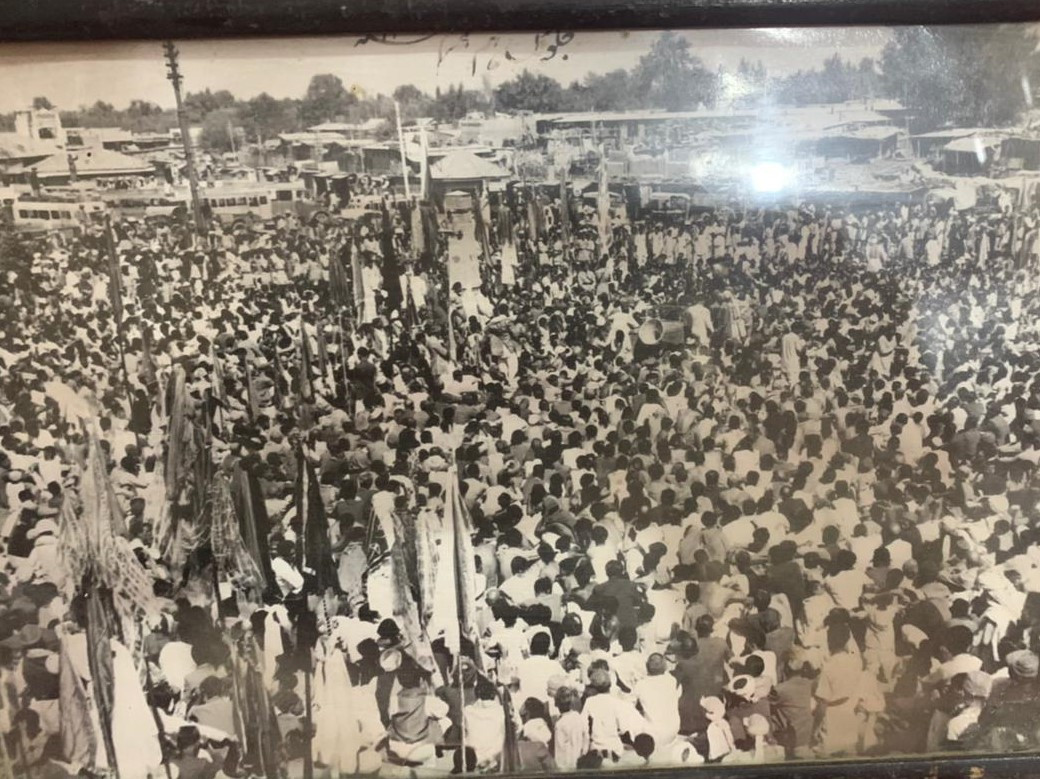
Official and and regular azadaris were started after the creation of Imambargah e Kalaan in 1922. Sheikh Abdul Ali Haravi Al-Tehrani created the Imambargah Isna Ashari Kalaan at Mikangi Road in Quetta. He constructed a small mosque and Imambargah, which became the landmark for Shia Muslims in Quetta. He was also the pioneer of azadari in this imambargah and made a ten-member committee comprising of five Persian-speaking (non-Hazara, mostly Kandahari) and five from the Hazara community to overlook the imambargah and its religious matters. The imambargah got damaged after the 1935 earthquake and was rebuilt with special funds given by the Viceroy of that time.
The Persian-speaking (non-Hazara) members included Khan Bahadur Mirza Muhammad Taqi Khan, Mirza Muhammad Shareef Khan, Faqeer Hussain Khan, Haji Rajab Ali Khan Kabuli and Haji Aiwaz Ali Khan. The Hazara members included Sobaidar Major Ali Dost, Sobedar Yazdan Khan, Mashal Sultan, Syed Ghulam Hussain and Haji Nasir Ali. The imambargah was officially registered during the lifetime of Sheikh Abdul Ali, who made sure that these 10 members would perform their duties in a spiritual way. He also made sure that if anyone died, they would be replaced by the same rules mentioned in the manifesto of the imambargah by the Sheikh.
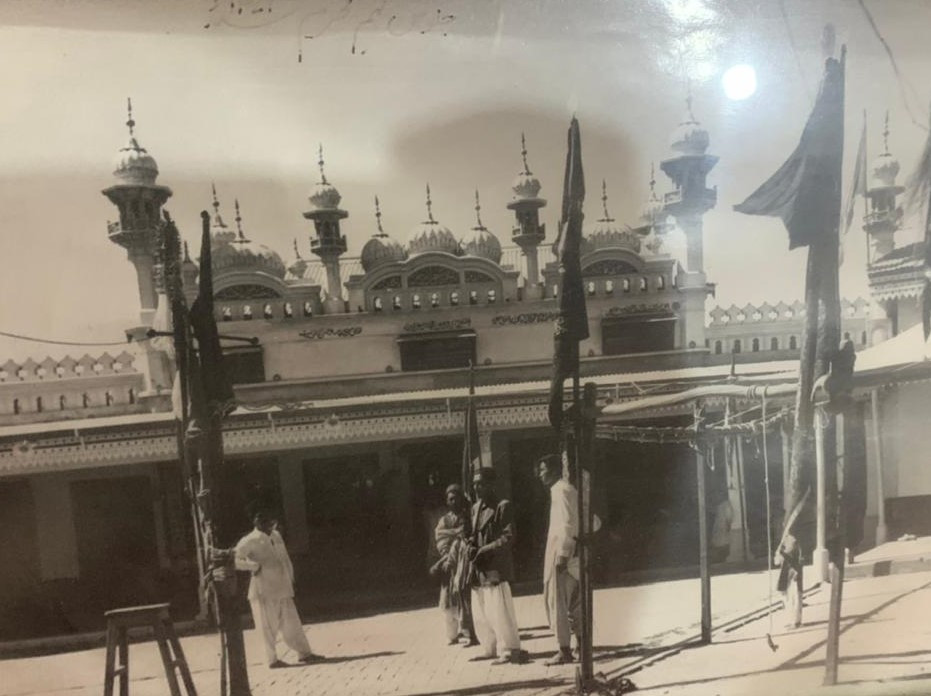
This imambargah was the first one to be targeted amongst Shia attacks on 4th July 2003 during Friday prayers. The area of Kalaan Imambargah is almost one acre large and the Zawaar-Khana (pilgrimage house) in this imambargah was built with a 100,000-rupee donation from Khadija Khatoon, the wife of Seth Sulaiman. The current Hazara members of the imambargah include Sardar Nisar, Mehmood Agha, Daud Agha, Faqeer Hussain and Samad. The non-Hazara members include Haji Abbas Mir, Mirza Arif, Ameer Mukhtar Mir, Wajid Ali and Mirza Haider.
Imambargah Anjuman e Hussaini Qandahari (Alamdar Road)
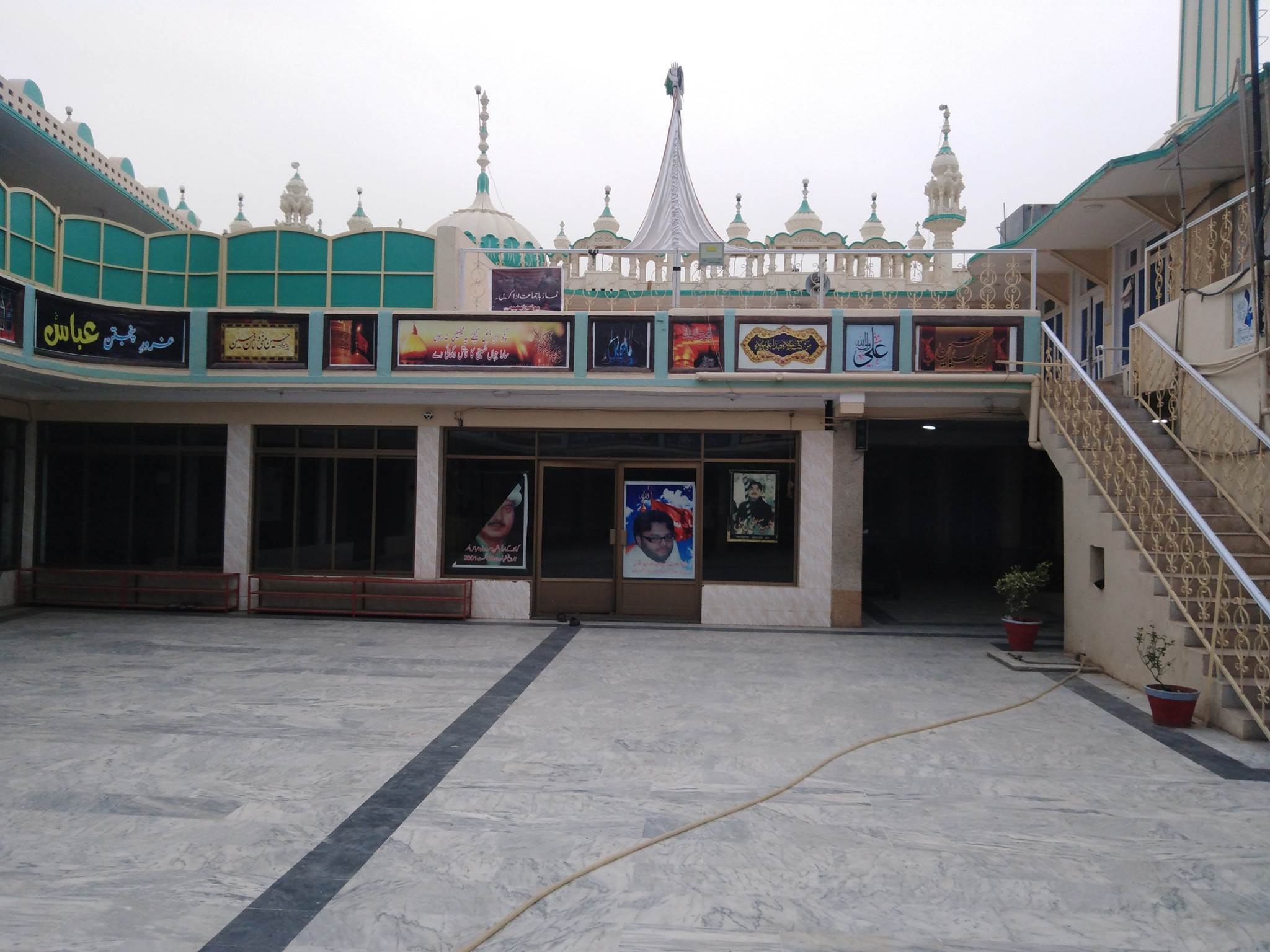
The Persian speaking community of Kandahar held a meeting in 1939 during which they decided to build a new mosque and imambargah. As a result, they bought property for Anjuman e Hussaini Qandahari on 1st February 1940 on Barnas Road (Alamdar Road). The meeting was headed by Haji Agha Samad Ali Qizalbas, along with Haji Muhammad Zaman, Khalifa Karbalai Ali Gohar, Haji Haider Ali, Karbalai Muhammad Hussain, Seth Abdur Rauf, Ustaad Ghulam Abbas, Haji Haider Ali (Jeweler), Agha Raza Bakhtiari, Mohib Ali and Haji Abdul Zahir. In 1948, the anjuman started the construction of imambargah, which spread across 30,000 square feet. Later, more land was acquired to make a library and Zawwar Khana, which can be seen in the newly constructed building.
Haji Samad Ali Qizilbash used to go door-to-door to collect donations, since he was excited to build a new imambargah and unite his community members under one umbrella. After the construction of the imambargah, a separate mosque was built by Haji Muhammad Zaman and after 1980, a proper place was built within the imambargah’s vicinity to bathe dead bodies. While the imambargah was being constructed, Mirza Hussain Jan and Karbalai Ali Akbar (the son of Karbalai Ali Gohar) held majalis and religious gatherings at their places.
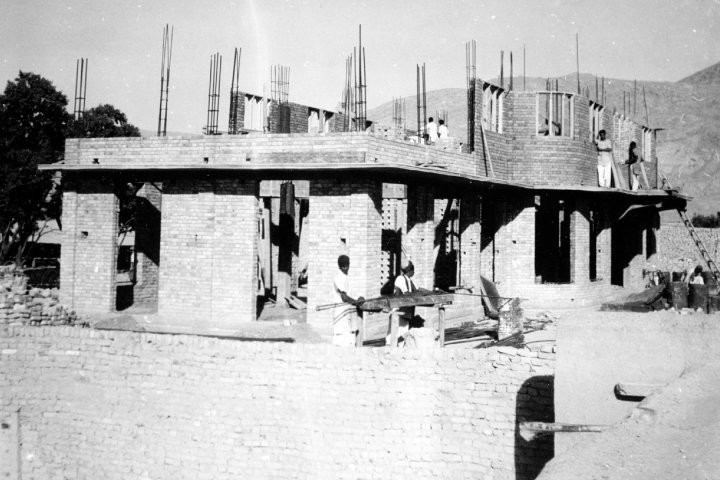
Mr. Fazal Ahmed Ghazi told Professor Nasir that Agha Yaqoob used to recite a Persian Noha, “Ay Kabutar-e-Haram Chara Teer Khurda ee,” which is now recited on the ninth night of Muharram, written in the memory of Shahzada Ali Asghar (a.s) the six-month-old martyr of Karbala. An old building was redesigned and constructed during the tenure of late Lala Muhammad Ali Shaheed, who was martyred in the Alamdar road blast. He also built the replica of Hazrat Abbas’s (a.s) tomb as per its architecture in Karbala. Currently his younger brother, Lala Mehmood, is president of Qandahari Imambargah.
Anjuman e Asna Ashari Punjabi
In his book “Hussaini Nama,” Syed Hadi Hussain writes about how when he visited Quetta for the 10 Days of Muharram in 1950, there was no proper imambargah in the Punjabi community. Between 1924 and 1925, a proper imambargah was built near Seth Rauf’s residence on Alamdar Road, where Sobedar Ghulam Hussain Hazara used to recite Noha in Urdu. This imambargah was also affected by the 1935 earthquake. Temporary construction was done soon after and proper construction undertaken in 1962. New construction was done with support from Chaudhry Shareef, Hussain Shah, Chaudhry Farman Ali and Haji Jalal.
Before this imambargah, Syed Shah Sharaf started azadari at a rented house on Mission Road. Syed Shah Sharaf was from Talagang Chakwal in Punjab and migrated to Quetta, where his uncle Syed Rasool was residing and was deployed as a Tehsildar, in 1880. Sharaf got the building blocks together for the current Punjabi Imambargah along with other Punjabis who used to visit his imambargah on Mission Road. Punjabi Imambargah was previously known as Shah Sharaf’s Imambargah also.
Syed Hussain Shah Hamdani, Shah Sharaf’s son, told Professor Nasir in his book that after the 1935 earthquake, Nawab of Khairpur used to donate money for the Punjabi Imambargah. He said he remembers pilgrims going to Iran who used to stay there, as well as scholars from other part of the country who used to recite majalis and give speeches in The Islamia School Quetta. Proper Niyaaz used to be made and daal chawal was served on the Day of Ashura.
Anjuman-e- Nasirul Azha
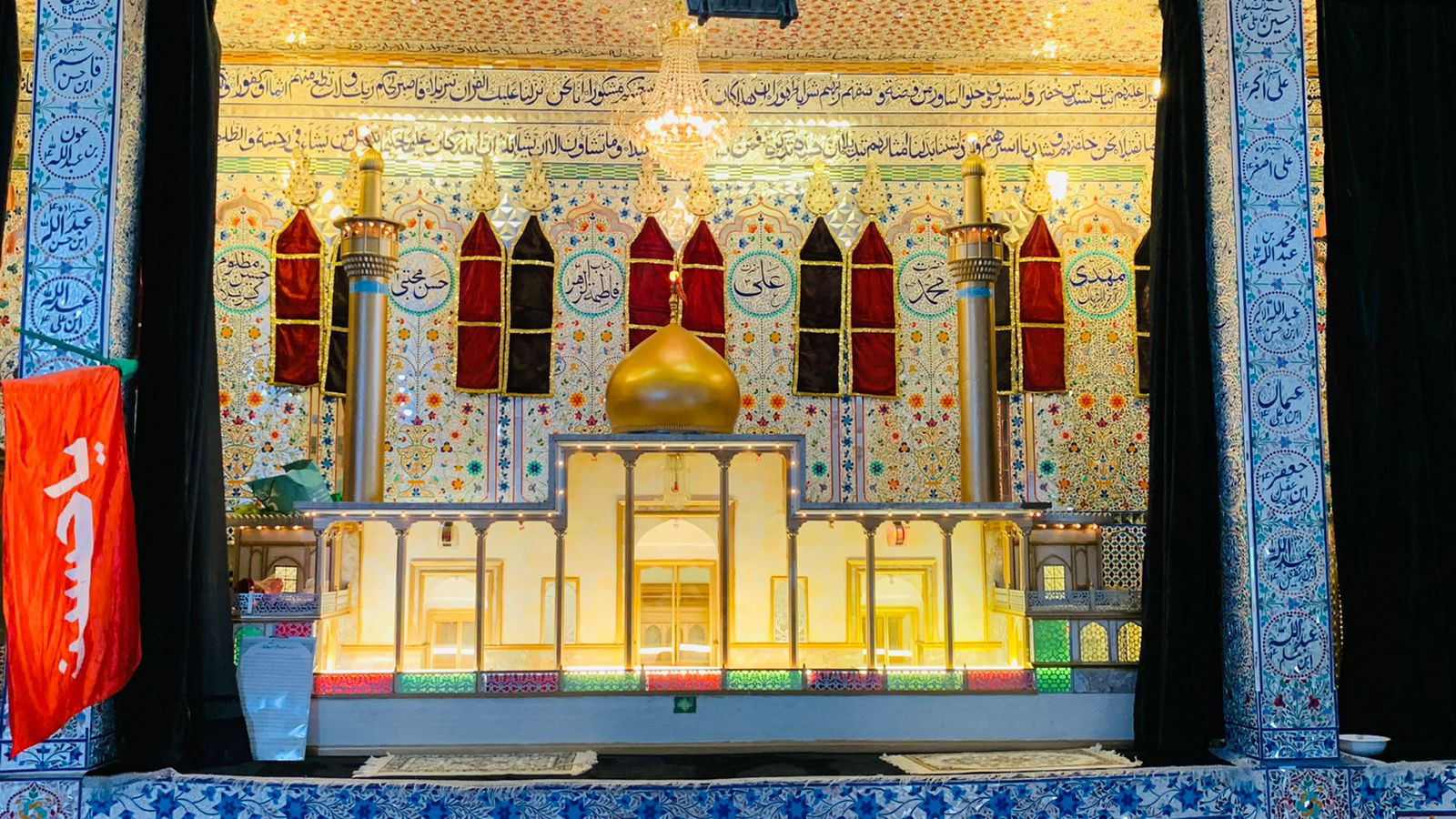
Before the earthquake of 1935, the Urdu-speaking community in Quetta (mostly made up of people from Uttar Pradesh in current day India) started their own azadari at a private venue on Toghi Road. These azadaris continued after independence. In 1948, Syed Tasawwur Ali and Fakhar ul Hasan started a small procession on the seventh day of Muharram on Abdul Sattar Road. Soon after this, the groundwork for Imambargah Nasir ul Azha started. The pioneers of this imambargah included Professor Syed Nosha Hussain, Syed Iqtidar Alam, Syed Mumtaz Zaidi, Syed Waqif, Syed Ghadeer Naqvi, Syed Tasawwur, Syed Gohar Ali, Mirza Hadi Qizilbash, Syed Riaz Muttlib Naqvi, Syed Saim Raza, Syed Ameen ul Hasan, Syed Hamid Ali and Syed Saikh Hussain.
The initial land that Nosha Sahab bought from locals for the constructions of the site was around 18,000 square feet. After the first manifesto was made, the imambargah was officially registered in 1951. Nosha Sahab, who was the first president of the imambargah, started construction, which took 10 years. The replica of Imam Hussain’s grave and tomb, which can be seen inside the main hall, began in 1964. The imambargah was later extended to include a Zawwar Khana, which included three large halls and 24 rooms to accommodate pilgrims going to Iran and Iraq via Quetta. This new construction was funded by Syed Asghar Rizvi and Dr.Ruqaiya Hashmi, ex-MPA of the Balochistan Assembly.
Bangash/Toori Imambargah
The Bangash community belongs to the Orakzai agency area of Khyber Pakhtunkhwa but a few people from the community migrated to Quetta before the creation of Pakistan and built their own imambargah. There, they could practice Muharram in their local language. The imambargah was created in 1945 at Barnas Road (Alamdar Road) under the leadership of Sobaidar Maqsood Ali, who invited his friends Syed Agha Hussain, Jaffar Ali Bangash, Syed Ibrahim Shah, and Irshah Hussain to join him in creating the imambargah.
Toori community belongs to Pakhtoon Kirlani tribes of Parachinar. Toori Pakhtoons used to perform their religious rituals with Bangash Pakhtoons in Bangashi Imambargah, and a few of them were also seen initially in Syedabad and Qandahari Imambargah respectively. But in 1970, they collected funds and bought a small place which was named Imambargah Isna Ashari Toori and is also in the same place as Syedabad on Alamdar Road. The pioneers included Syed Ali Shah, Syed Badshah Hussain, Syed Ahmed Shah, Syed Hashim,Syed Abbas, Shareef Hussain DSP, Syed Ghulam, Karbalai Ghulam Hussain, Moassib Hussain and Captain Jan Muhammad.
Toori and Bangash communities used to invite scholars from their own areas who could speak in their local languages, as many of them were not literate in Urdu. They used to perform Muharram rituals from the third until the eleventh day Muharram and currently have separate registered identities and part in the tenth day of Muharram procession.
Anjuman-e-Baltistani
The Baltistani community has been in Quetta since before partition and it also considered to be part of the “Hazara pioneers” platoon in the British Army. Many visitors from Baltistan used to visit Quetta, especially pilgrims going to Iran. Students also used to go to Qum (Iran). In 1931, Babu Hussain acquired a small space from Ghulam Hussain Hazara, which was later reserved for female majalis and is currently known as Zainabia Imambargah. The new building where the imambargah is currently located was Zawwar Khana, which was later turned into an imambargah as well.
Bait ul Ahzan Imambargah
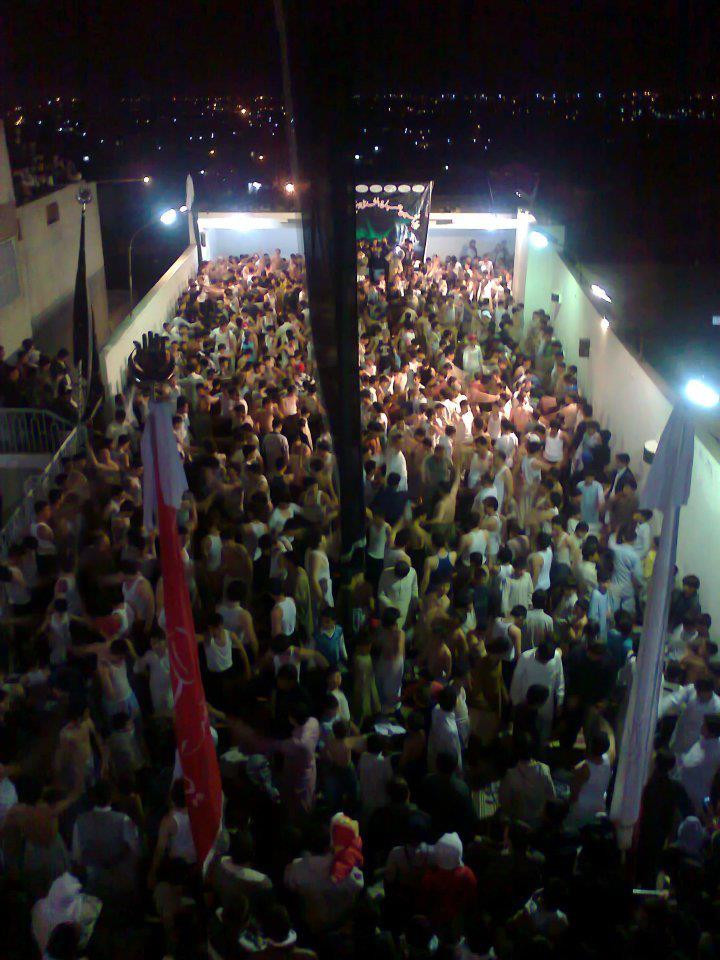
Located almost 3,000 ft. above the city on the Mehardar mountain range is an imambargah built by former aviation instructor, Agha Syed Abdul Hameed Rizvi (Agha e Gul), with the name Bait ul Ahzan. Syed Hameed Rizvi is son of late Agha e Parhezgar, who came from Iraq to spread the religious teachings of Masoomen (a.s). He was a pious man and was famous for his religious knowledge and kindness in the vicinity of Alamdar Road.
Agha Hameed says that this place is itself a miracle built in a once silent place in the mountains in 1976. The area is 7,000 square feet and built with 20,000 bricks. When he asks visitors to guess how many bricks, Hameed said they usually estimate 80,000. Steel used was brought for the sake of basement and help build the two-story structure. Since day one, Hameed said he has personally looked over all the azadaris in this imambargah. In addition to normal rituals, he said they have a silent procession on the tenth night of Muharram (Sham e Ghariban) in the nearby graveyard, where he recites the Marsiya of Sham-i-Ghariban.
Hazara Imambargah in Alamdar Road & Brewery Road (Hazara Town)
The oldest imambargah in Quetta is Anjuman-e-Saadat e Hussainiya Syedabad, which was built in 1951. The place was donated by Agha Syed Muhammad Rafeeh. The Nachari Hazara Imambargah on Alamdar road was built in the 1960’s when the Hazara population increased in the area. Other imambargahs were later constructed in Mominabad, Nasirabad and other areas of Meharabad.
Masjid o Imambargah Wali Asar is the oldest in Hazara Town on Brewery Road. It is also in a densly populated Shia area and has more than 30 imambargahs. The Hazara Town Shia join the Muharram procession on the tenth night here at Alamdar Road as it has its ancient history. However, on other occasions throughout the year, they have permission to organize their own processions and religious gatherings.
Mujtaba Javaid is a freelance writer. All information and facts provided are the sole responsibility of the writer.
